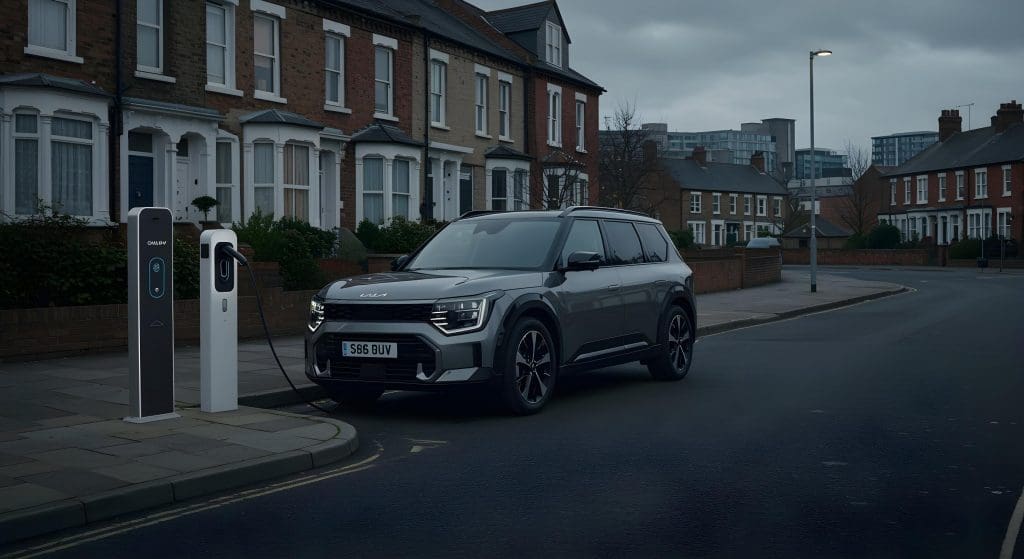For years, the great electric vehicle dream seemed to come with one condition: a driveway. No private off-street parking? It felt like EV ownership was out of reach. But it’s 2025—and that myth has officially been put to rest.
Owning and charging an EV without a driveway is not just possible—it’s growing more seamless every day. Here’s your **ultimate guide** to charging from flats, terraced homes, or street-side parking across the UK.
1. The Public Network: Your New Electric Fuel Routine
Think of public charging as your new weekly fuel station. It’s not a backup—it’s your new default. These three methods let you integrate charging into your existing routine:
The Weekly “Big Shop” Charge
Use rapid chargers at supermarkets like **Tesco**, **Sainsbury’s**, and **Lidl**, or hubs like Gridserve’s Electric Forecourts. These offer DC charging (50–350 kW), so while you shop for 30–40 minutes, your car gains 150–200 miles of range. Ideal for a convenient top-up that powers you through the week.
On‑Street Residential Charging
Councils are installing chargers on lamp-posts and pavement bollards via the On-Street Residential Chargepoint Scheme. Networks like Ubitricity and Shell-char.gy lead this space. These are AC chargers (~5–7 kW), ideal for overnight top-ups at home.
Destination Charging
Charge while you go about your day—at gyms, cinemas, hotels, or workplace car parks. These 7 kW AC chargers are perfect if your vehicle is stationary for several hours, adding meaningful range while you work, dine, or unwind.
2. The Workplace Charging Lifeline
Workplace charging is the holy grail for EV owners without a driveway. You plug in at work, leave, and head home with a full battery. Many companies offer this as a free or subsidised benefit, supported by the government-backed Workplace Charging Scheme. If your employer doesn’t yet offer it, ask—this scheme is often easy to implement and has strong sustainability benefits.
3. How to Navigate the Public Network with ONEEV
Gone are the days of juggling multiple apps. The ONEEV app puts you in control—find chargers nearby, check prices, reserve slots, and start sessions all from one place. Ideal when charging at council-supported lampposts or rapid hubs in cities like Birmingham, Cork, Swindon and Nottingham.
4. Cost Comparison
| Charging Option | Typical Cost (p/kWh) | Ideal Use |
|---|---|---|
| On‑street lamppost (overnight) | 30–50p | Evening top-up at home |
| Supermarket/rapid hub (DC) | 45–75p | Weekly shopping or errands |
| Workplace charging | 10–25p (or free) | Daily commute |
| Destination charger (AC 7 kW) | 30–60p | While dining or at the gym |
5. EV Etiquette & Cable Preparation
- Keep a Type 2 cable in your boot—it’s required for most AC chargers.
- Use rapid chargers efficiently: aim for 80% then move on, as charging slows significantly past that point.
- Charge only when parked at designated EV bays, and tidy up your cable after use.
6. Why EV Ownership Without a Driveway Works
Whether you live in Leicester, Galway, Leeds, or Musselburgh, you can now own and charge an EV with ease. Car parks, high streets, council streets and workplaces offer modern, affordable ways to charge. With smart planning and the ONEEV solution, EV ownership is now inclusive, not exclusive.
No driveway? No problem. Just plug in smart.
